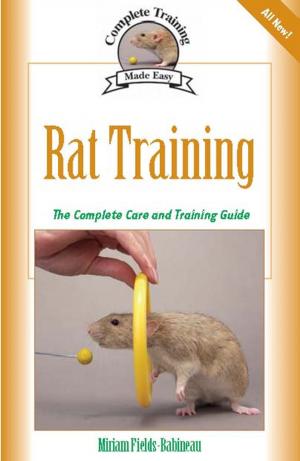| Author: | Jackie Parente | ISBN: | 9781620080108 |
| Publisher: | CompanionHouse Books | Publication: | June 19, 2012 |
| Imprint: | CompanionHouse Books | Language: | English |
| Author: | Jackie Parente |
| ISBN: | 9781620080108 |
| Publisher: | CompanionHouse Books |
| Publication: | June 19, 2012 |
| Imprint: | CompanionHouse Books |
| Language: | English |
Can It!, from the editors of Hobby Farm Homes, gives readers a contemporary perspective on this favorite traditional kitchen art. As the eat local” movement sweeps the country, so too does the popularity of canning and preserving the harvest from our own gardens and hobby farms. Filled with nearly 200 full-color photograph and illustrations, Can It! is a detailed beginner’s guide that takes the reader step by step through the process of canning fruits and vegetables. From canning tomatoes and squashes to preparing homemade salsas, relishes, and jellies, this book simplifies the processes so that even modern busy people can find time to do it themselves, while emphasizing cost-saving, sustainability, and food safety.
The book begins with a chapter on preparing and planning, deciding which methods are right for you, and what produce you like enough to invest the time to preserve it. The methods discussed include freezing, flash freezing, water-bath canning and pressure canning. The author, Jackie Callahan Parente is a lifelong canner and shares her insights, secrets, and shortcuts for each of these methods of food preservation. Charts throughout the book detail methods with specific timings, temperatures, and required equipment. Summary pages (Process Overview”) give the reader a point-by-point wrap-up of each technique with all of the important takeaways.
The chapter on freezing offers general guidelines on which foods freeze best (and worst) with safety instructions and processes to capture the freshest flavors from dozens of possible foods. The author offers information on freezers, containers, thawing processes, energy-saving methods, and head space requirements. Sidebars offer ways to avoid and solve common problems such as freezer burn, discoloration, texture issues, and so forth. Three dozen recipes for freezing fruits and vegetables, including storing prepared items such as strawberry jam, creamed corn, and stewed tomatoes. Beyond fruits and vegetables, the chapter also gives instructions for freezing, breads, pastries, dairy, meat, and complete meals.
The chapter on canning offers information on high- and low-acid canning as well as the differences between water-bath versus pressure canning, with detail on proper use of jars, lids, and bands, selection of the right utensils, instructions for filling the jars, and safe storage. This chapter offers 15 water-bath canning recipes and 12 pressure canning recipes for the most popular fruits and vegetables (tomatoes, apples, berries, pears, peaches, and more).
The canning process can be applied to fresh fruits and veggies as well as to homemade condiments and spreads. The chapter Jams, Jellies, and More” helps canners narrow down the choices and offers required background for the properties of fruit, pectin, acid, and sweeteners. This chapter offers over 30 recipes for everyone’s favorites, such as blueberry jam, grape jam, and peach preserves, plus some delicious unexpected delights, such as rhubarb conserve, slow-cooker apple butter, and pear ginger preserves. Also on offer are solutions to commonly encountered problems with canning preserves plus labeling and storage.
Pickles, Relishes, Salsas, and Such” salutes everyone’s favorite condiments, offering recipes for 20 delectable jar-ables” and a primer for pickling produce, from salt and brine to decorating the jars. Beginning with basic kosher dill pickles and pickled mixed veggies, the author offers recipes for summer and winter relishes, festive, zesty salsas, chutneys, ketchup, sauerkraut and more!
The appendix offers instructions for important techniques critical to the processes described in the book, including blanching, treating for discoloration, preparing sugar syrups, altitude adjustments, and processing times. Eight helpful charts for equivalents, conversions, and yields plus an extensive glossary, resource section, and index complete the volume.
Can It!, from the editors of Hobby Farm Homes, gives readers a contemporary perspective on this favorite traditional kitchen art. As the eat local” movement sweeps the country, so too does the popularity of canning and preserving the harvest from our own gardens and hobby farms. Filled with nearly 200 full-color photograph and illustrations, Can It! is a detailed beginner’s guide that takes the reader step by step through the process of canning fruits and vegetables. From canning tomatoes and squashes to preparing homemade salsas, relishes, and jellies, this book simplifies the processes so that even modern busy people can find time to do it themselves, while emphasizing cost-saving, sustainability, and food safety.
The book begins with a chapter on preparing and planning, deciding which methods are right for you, and what produce you like enough to invest the time to preserve it. The methods discussed include freezing, flash freezing, water-bath canning and pressure canning. The author, Jackie Callahan Parente is a lifelong canner and shares her insights, secrets, and shortcuts for each of these methods of food preservation. Charts throughout the book detail methods with specific timings, temperatures, and required equipment. Summary pages (Process Overview”) give the reader a point-by-point wrap-up of each technique with all of the important takeaways.
The chapter on freezing offers general guidelines on which foods freeze best (and worst) with safety instructions and processes to capture the freshest flavors from dozens of possible foods. The author offers information on freezers, containers, thawing processes, energy-saving methods, and head space requirements. Sidebars offer ways to avoid and solve common problems such as freezer burn, discoloration, texture issues, and so forth. Three dozen recipes for freezing fruits and vegetables, including storing prepared items such as strawberry jam, creamed corn, and stewed tomatoes. Beyond fruits and vegetables, the chapter also gives instructions for freezing, breads, pastries, dairy, meat, and complete meals.
The chapter on canning offers information on high- and low-acid canning as well as the differences between water-bath versus pressure canning, with detail on proper use of jars, lids, and bands, selection of the right utensils, instructions for filling the jars, and safe storage. This chapter offers 15 water-bath canning recipes and 12 pressure canning recipes for the most popular fruits and vegetables (tomatoes, apples, berries, pears, peaches, and more).
The canning process can be applied to fresh fruits and veggies as well as to homemade condiments and spreads. The chapter Jams, Jellies, and More” helps canners narrow down the choices and offers required background for the properties of fruit, pectin, acid, and sweeteners. This chapter offers over 30 recipes for everyone’s favorites, such as blueberry jam, grape jam, and peach preserves, plus some delicious unexpected delights, such as rhubarb conserve, slow-cooker apple butter, and pear ginger preserves. Also on offer are solutions to commonly encountered problems with canning preserves plus labeling and storage.
Pickles, Relishes, Salsas, and Such” salutes everyone’s favorite condiments, offering recipes for 20 delectable jar-ables” and a primer for pickling produce, from salt and brine to decorating the jars. Beginning with basic kosher dill pickles and pickled mixed veggies, the author offers recipes for summer and winter relishes, festive, zesty salsas, chutneys, ketchup, sauerkraut and more!
The appendix offers instructions for important techniques critical to the processes described in the book, including blanching, treating for discoloration, preparing sugar syrups, altitude adjustments, and processing times. Eight helpful charts for equivalents, conversions, and yields plus an extensive glossary, resource section, and index complete the volume.















